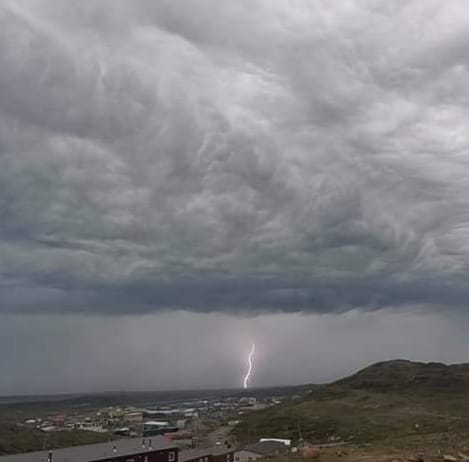Lightning strikes shock Iqaluit
The rare phenomenon was caused by unusually warm weather and moisture, a meteorologist said.

Forget about striking twice — it is rare for lightning to strike at all in Iqaluit. Yet that’s what happened over the weekend.
Lightning struck in Iqaluit during a storm on Sunday. Terri Lang, Environment and Climate Change Canada’s meteorologist for Nunavut, said the department’s weather system did not pick up how many times lightning struck, but that it did occur in the region.
“It was there for a little while,” Lang said.
Such weather is rare in Iqaluit because lightning needs both warm air and moisture, Lang said.
“As we see in the south, it gets hot, it gets humid, clouds bubble up and we get thunderstorms,” Lang said, explaining that clouds need to topple over each other to produce the unstable weather pattern that creates lightning.
[Scientists are stunned by rare Arctic lightning storms]
But by being located on the cold Arctic Ocean and often surrounded by snow and ice, Iqaluit is not often likely to see that type of weather occur.
With the climate in the Arctic warming, lightning’s frequency is likely to increase in Iqaluit, Gross said.
“As the atmosphere warms and the climate warms, thunder and lightning will become more common in the Arctic,” Gross said.
East of Nunavut, Greenland has also been experiencing irregular weather. The first-ever rainfall was recorded at the summit of Greenland’s ice sheet on Aug. 14.